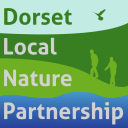Tom Munro – Dorset AONB Manager

It’s a couple of months since the annual Dorset Local Nature Partnership Forum in early March, and it’s been a time in which so much of our human world has changed unrecognisably. The simple act of gathering in number to shape and support nature’s recovery in Dorset now feels like something from a bygone age.
I really like ‘nature recovery’ as the current term of choice. It’s wider in scope than ‘biodiversity’; it implies systems as well as assets, yet is so much more accessible than ‘natural capital’ or ‘ecosystem services’. It’s a great term able to bring all of these aspects under it.
I won’t go into why there’s such focus on nature recovery. It’s widely recognised that England is one of the most nature-depleted countries in the world, we rely on nature for our health, wellbeing and economy. A high-functioning natural system will be more resilient in the face of climate or pathogen shocks.

As ‘mot du jour’, nature recovery has a lot of adopters, and this blog will seek to explain the various current national and local nature recovery initiatives, most of which have their roots in the Government’s 25 Year Environment Plan (25YEP).
- First up: Nature Recovery Networks. At a national level, Natural England have been leading the establishment of a network of organisations committed to delivering on the 25YEP’s target of 500,000 hectares more wildlife habitat. Also published in early March is Natural England’s Handbook for creating a Nature Network which seeks to guide and encourage local efforts.
- At a local level, Dorset Environmental Record Centre publish the Ecological Networks, which provides the backbone of what a nature recovery network could be. Clearly the extent to which wildlife habitats can be established depends on landowner willingness, which can be influenced by incentive. We hope the forthcoming Environmental Land Management System (ELMS) provides adequate incentive for the job.
- ‘Up to 25 Nature Recovery Areas’are also mentioned in the 25YEP. There is no published strategy for locating, selecting and implementing these, but there could be similarities to the 12 initial Nature Improvement Areas, of which Wild Purbeck was one: a defined area where nature recovery is prioritised, and delivery supported with intensive investment. Nature Improvement Areas were part of government’s response to Prof. Sir John Lawton’s 2010 report ‘Making Space for Nature’; the first 12 arose from a national competition in 2012. They had an injection of funds, national information and coordination which catalysed a suite of local conservation action: we were lucky enough to secure that for Dorset.
- Local Nature Recovery Strategies are a part of the Environment Bill which is on its passage through the House of Commons. Currently, the bill gives a comprehensive list of what they should include and states that their preparation is a statutory requirement of local authority, a mayoral area, a National Park authority or Natural England. These will bring partners together to describe a shared vision, and how it can be achieved. If the bill receives Royal Assent, it is likely that this won’t be a requirement for around 5 years.
- This is where the AONB Nature Recovery Plans can come in. They are a key component of the AONBs’ collective Colchester Declaration, a statement of ambition that these landscapes deliver much more for nature. Like Local Nature Recovery Strategies they will be a co-developed plan, but one we can get started on developing now. The intention is that development work will assist towards a Local Nature Recovery Strategy within and beyond the AONB boundaries. They will inspire action and not constrain ambition. They will influence how to achieve net gain in the planning system. They will hopefully influence investment through ELMS and any other future mechanisms. Like them or not, it’s likely we’ll see investment through carbon and biodiversity offsets, etc.
The LNP Forum gave a huge amount of insight and thought into these plans: what they should contain, who should be involved in making them, how they can reach across the AONB boundaries and how we measure delivery and success. The AONB team will digest this and aim to deliver the best plan that resources allow. We’re currently working with three farmers’ groups across the AONB in a test and trial for ELMS which will also shape the AONB Nature Recovery Plan. Right at the moment however, we’re piecing together an approach which can continue under the current social distancing requirements with a team that is at least partly redeployed to assist the community response to coronavirus.

This COVID-19 experience is sharpening our pre-existing determination that there should be more accessible nature in all places, for all people. England’s protected landscapes share a vision that these cherished places should be at the forefront of nature recovery, as testbeds for novel methods and as wells of natural diversity and abundance, enabling nature recovery across the rest of the nation. Clearly, this does require at least some of the resources and tools described in Julian Glover’s Landscapes Review. Government’s response is eagerly awaited.
